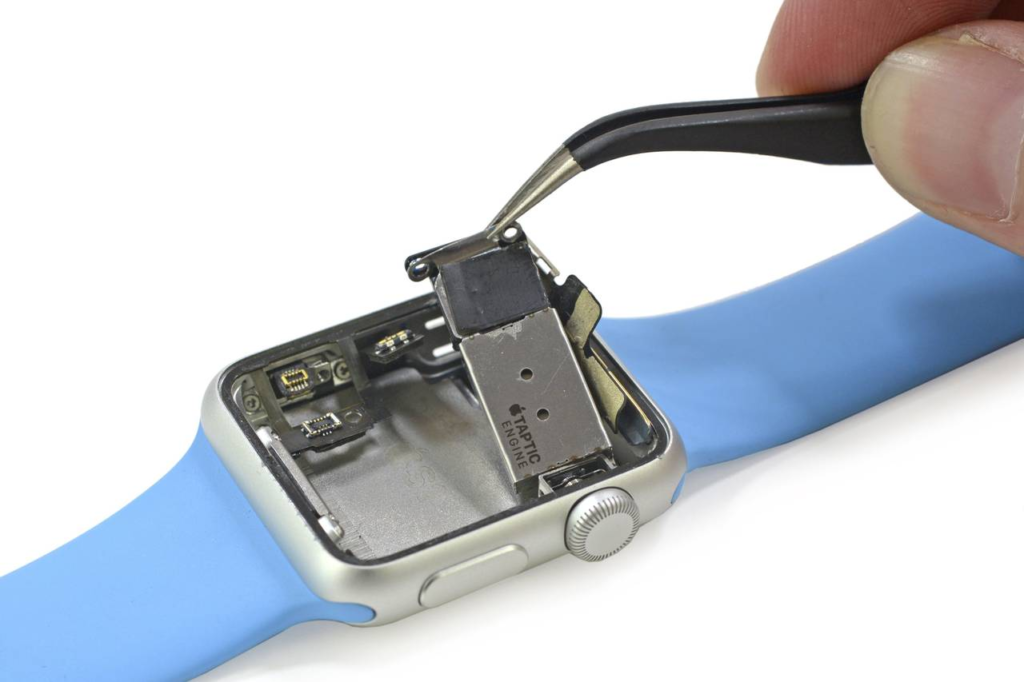In today’s digitally-driven world, smartwatches have become our next-level personal assistants. Beyond telling time, they monitor health metrics, sync with our smartphones, and even allow us to control home automation systems. A significant part of this revolutionary user experience is enabled by a relatively underappreciated technology – the Haptic Engine. This article seeks to shed light on this enchanting technology, transforming our interactions with these high-tech timepieces.
Understanding the Haptic Engine: A Gentle Touch, A Powerful Impact
If you’ve ever felt your smartwatch gently nudge you with a reminder or the sensation of a heartbeat during a fitness activity, you’ve experienced the magic of the Haptic Engine. So, what is it exactly?
The Haptic Engine is a specialized piece of technology designed to produce physical feedback in response to user interactions. In essence, it uses vibrations, or haptics, to communicate. This unique system can generate a wide variety of tactile sensations, including taps, thumps, and even the feeling of a rotating dial. These various sensations are produced by tiny linear actuators – mechanical elements that generate movement in response to an electrical signal.
This technology is fundamentally about creating a more immersive, tactile, and intuitive user experience. Unlike visual or auditory feedback, haptic feedback can provide information without disrupting the user’s attention. For instance, if you’re driving, your smartwatch can give you turn-by-turn directions through distinct vibration patterns, enabling you to keep your eyes on the road.
But the Haptic Engine’s capabilities go beyond navigation. It’s also an essential tool for fitness tracking. When you’ve hit your exercise goal or reached your target heart rate, your smartwatch can generate distinct haptic feedback. In some models, the Haptic Engine can even mimic a heartbeat, adding an additional layer of immersion to your workout.
Moreover, the Haptic Engine can also enhance accessibility for users with visual or auditory impairments. By translating notifications, alarms, and reminders into distinct vibration patterns, it allows these users to interact with their smartwatches in an intuitive and non-disruptive way.
In short, the Haptic Engine provides a gentle touch that leaves a powerful impact, revolutionizing our interaction with wearable technology. By making digital interactions more tactile and intuitive, it significantly enriches the smartwatch user experience.
The Evolution of Haptics: From Vibrant Beginnings to Sophisticated Sensations
This part traces the progression of haptic technology, from the rough and noisy rumble packs of early gaming consoles to the refined and nuanced vibrations in today’s smartwatches.
Vibrant Beginnings: The Dawn of Haptics
The journey of haptic technology began in an arena filled with excitement and engagement – the gaming industry. In the 1990s, “rumble packs” were introduced in game controllers to produce vibrations, adding an immersive dimension to gameplay. These early instances of haptic feedback, while rudimentary and largely focused on enhancing game experiences, marked the advent of tactile technology.
From Gaming Gadgets to Everyday Devices: The Expansion of Haptics
As technology advanced, so did the applications of haptic feedback. The raw, exaggerated vibrations of the gaming world began to find their way into everyday devices, offering more subtle and meaningful feedback. Haptic technology started being incorporated into smartphones and other handheld devices, offering physical responses to touch inputs. Despite these advances, haptics were still relatively unsophisticated, providing a monotonous sensation that lacked variety and subtlety.
The Rise of the Haptic Engine: A Revolution in Tactile Technology
The true game-changer came with the introduction of the Haptic Engine, which opened up a world of refined, nuanced, and diverse tactile sensations. This sophisticated technology, now a mainstay in wearable devices such as smartwatches, uses tiny linear actuators to create a wide array of tactile sensations. With this leap in precision and subtlety, the Haptic Engine transformed the landscape of haptic technology.
The Taptic Engine: A Benchmark in Haptic Innovation
A notable example of haptic sophistication is the Taptic Engine by Apple, integrated into their smartwatches. This cutting-edge technology enables distinct tactile notifications, simulates the push of a button, and even creates the sensation of a pulsating heartbeat during fitness tracking. It represents a level of tactile immersion that has far surpassed the rudimentary rumble packs of the past.
How the Haptic Engine Augments User Experience
Here, we’ll investigate how the Haptic Engine elevates user experience. From fitness tracking to navigation assistance, we’ll explore the multifaceted applications of haptic feedback in smartwatches.
A New Dimension in Interaction
At the heart of the Haptic Engine’s role in augmenting user experience is its ability to add a tactile dimension to digital interactions. This technology takes user engagement beyond visual and auditory stimuli, incorporating touch as an essential communication channel.
In a smartwatch, for instance, distinct vibrations can indicate different notifications, like an incoming call, a new message, or an event reminder. By translating digital data into a tactile language, the Haptic Engine provides a more immersive and intuitive way to interact with smart devices.
An Ally in Fitness Goals
The Haptic Engine proves to be a powerful tool in fitness tracking applications. During a workout, your smartwatch can notify you when you reach certain milestones, like your target heart rate or step count. Some models even simulate the feeling of a heartbeat, reinforcing the sense of achieving fitness objectives. These tactile reminders not only provide real-time updates but also add motivation, making fitness tracking an engaging experience rather than a routine task.
The Silent Navigator
An area where the Haptic Engine truly shines is in providing navigation assistance. Imagine getting turn-by-turn directions without having to glance at your screen or hear vocal prompts. The Haptic Engine can deliver these directions as a series of distinct vibrations, allowing users to follow their route seamlessly and safely, especially when driving or walking in noisy environments.
Enhancing Accessibility
Lastly, the Haptic Engine plays a pivotal role in making smartwatches more accessible for individuals with visual or auditory impairments. Tactile alerts and reminders can be a game-changer for these users, enabling them to fully utilize the smartwatch’s functionalities without relying solely on visual or auditory cues. This adaptability demonstrates how the Haptic Engine can customize and enrich the user experience, making technology more inclusive.
Conclusion
As we’ve seen, the Haptic Engine has a profound impact on how we interact with smartwatches, introducing a tactile dimension to these powerful devices. By turning digital data into physical sensations, it creates a more immersive, intuitive, and personal user experience.
As technology continues to evolve, it’s exciting to envision how this quiet revolution under our wrists will shape the future of wearable technology. From increasing the authenticity of digital interactions to opening new avenues for accessibility and personalization, the Haptic Engine holds immense potential.
As we await these developments, one thing is clear: our smartwatches will continue to buzz, tick, and nudge us into the future.


